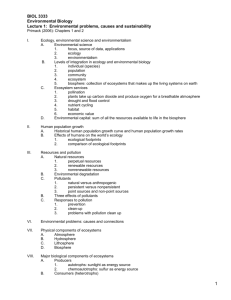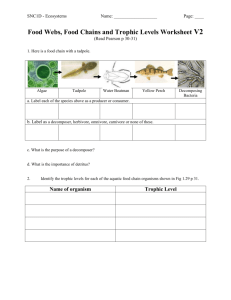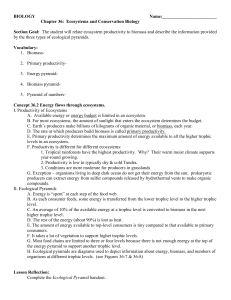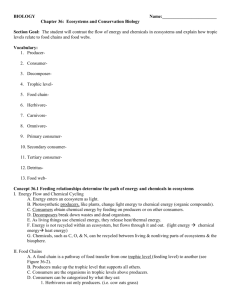Exploring the Fossil History of Plants, Insects and their Interactions
advertisement
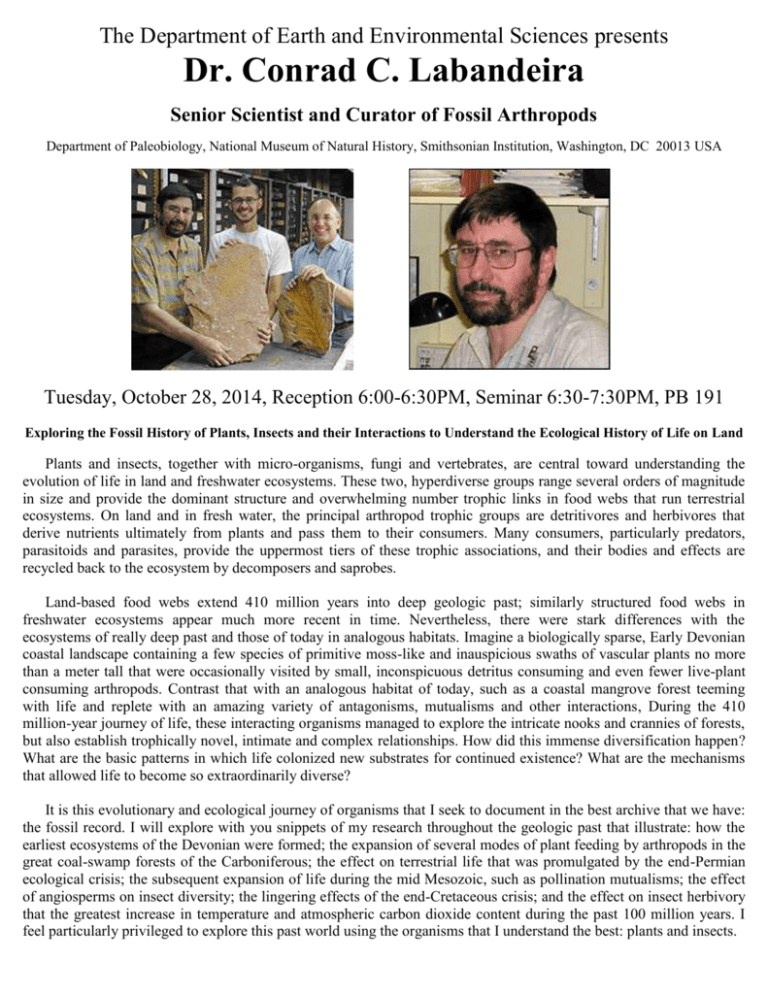
The Department of Earth and Environmental Sciences presents Dr. Conrad C. Labandeira Senior Scientist and Curator of Fossil Arthropods Department of Paleobiology, National Museum of Natural History, Smithsonian Institution, Washington, DC 20013 USA Tuesday, October 28, 2014, Reception 6:00-6:30PM, Seminar 6:30-7:30PM, PB 191 Exploring the Fossil History of Plants, Insects and their Interactions to Understand the Ecological History of Life on Land Plants and insects, together with micro-organisms, fungi and vertebrates, are central toward understanding the evolution of life in land and freshwater ecosystems. These two, hyperdiverse groups range several orders of magnitude in size and provide the dominant structure and overwhelming number trophic links in food webs that run terrestrial ecosystems. On land and in fresh water, the principal arthropod trophic groups are detritivores and herbivores that derive nutrients ultimately from plants and pass them to their consumers. Many consumers, particularly predators, parasitoids and parasites, provide the uppermost tiers of these trophic associations, and their bodies and effects are recycled back to the ecosystem by decomposers and saprobes. Land-based food webs extend 410 million years into deep geologic past; similarly structured food webs in freshwater ecosystems appear much more recent in time. Nevertheless, there were stark differences with the ecosystems of really deep past and those of today in analogous habitats. Imagine a biologically sparse, Early Devonian coastal landscape containing a few species of primitive moss-like and inauspicious swaths of vascular plants no more than a meter tall that were occasionally visited by small, inconspicuous detritus consuming and even fewer live-plant consuming arthropods. Contrast that with an analogous habitat of today, such as a coastal mangrove forest teeming with life and replete with an amazing variety of antagonisms, mutualisms and other interactions, During the 410 million-year journey of life, these interacting organisms managed to explore the intricate nooks and crannies of forests, but also establish trophically novel, intimate and complex relationships. How did this immense diversification happen? What are the basic patterns in which life colonized new substrates for continued existence? What are the mechanisms that allowed life to become so extraordinarily diverse? It is this evolutionary and ecological journey of organisms that I seek to document in the best archive that we have: the fossil record. I will explore with you snippets of my research throughout the geologic past that illustrate: how the earliest ecosystems of the Devonian were formed; the expansion of several modes of plant feeding by arthropods in the great coal-swamp forests of the Carboniferous; the effect on terrestrial life that was promulgated by the end-Permian ecological crisis; the subsequent expansion of life during the mid Mesozoic, such as pollination mutualisms; the effect of angiosperms on insect diversity; the lingering effects of the end-Cretaceous crisis; and the effect on insect herbivory that the greatest increase in temperature and atmospheric carbon dioxide content during the past 100 million years. I feel particularly privileged to explore this past world using the organisms that I understand the best: plants and insects.


